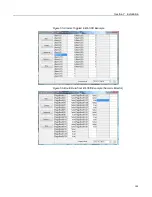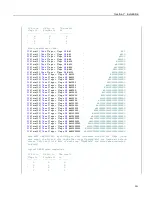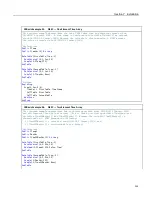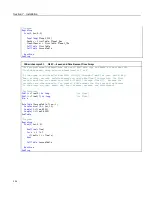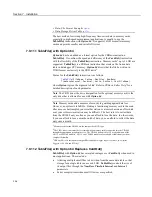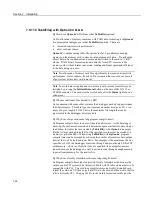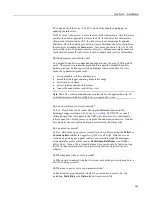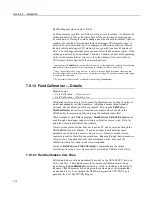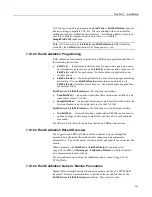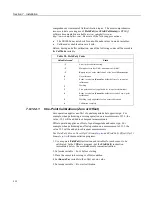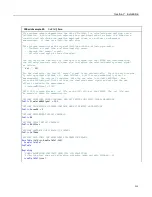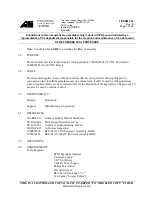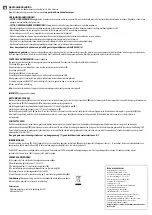
Section 7. Installation
7.9.12.4.2 Two-Point Calibrations (gain and offset)
Use this two-point calibration procedure to adjust multipliers (slopes) and offsets
(y intercepts). See
FieldCal() Slope and Offset (Opt 2) Example
(p. 218)
and
FieldCal() Slope (Opt 3) Example
(p. 220)
for demonstration programs:
1. Use a separate
FieldCal()
instruction and separate variables for each sensor to
be calibrated.
2. Ensure mode variable =
0
or
6
before starting.
a. If
Mode
>
0
and ≠
6
, calibration is in progress.
b. If
Mode
<
0
, calibration encountered an error.
3. Place sensor into first known point condition.
4. Set
KnownVar
variable to first known point.
5. Set
Mode
variable =
1
to start first part of calibration.
a.
Mode
=
2
(automatic) during the first point calibration.
b.
Mode
=
3
(automatic) when the first point is completed.
6. Place sensor into second known point condition.
7. Set
KnownVar
variable to second known point.
8. Set
Mode
=
4
to start second part of calibration.
a.
Mode
=
5
(automatic) during second point calibration.
b.
Mode
=
6
(automatic) when calibration is complete.
7.9.12.4.3 Zero Basis Point Calibration
Zero-basis calibration (
FieldCal()
instruction
Option 4
) is designed for use with
static vibrating-wire measurements. It loads values into zero-point variables
to track conditions at the time of the zero calibration. See
FieldCal() Zero
Basis (Opt 4) Example
(p. 223)
for a demonstration program.
7.9.12.5 Field Calibration Examples
FieldCal()
has the following calibration options:
•
Zero
•
Offset
•
Two-point slope and offset
•
Two-point slope only
•
Zero basis (designed for use with static vibrating-wire measurements)
These demonstration programs are provided as an aid in becoming familiar with
the
FieldCal()
features at a test bench without actual sensors. For the purpose of
the demonstration, sensor signals are simulated by CR1000 terminals configured
for excitation. To reset tests, use the support software
File Control
(p. 515)
menu
commands to delete .cal files, and then send the demonstration program again to
the CR1000. Term equivalents are as follows:
"offset" = "y- intercept" = "zero"
"multiplier" = "slope" = "gain"
213
Summary of Contents for CR1000
Page 2: ......
Page 4: ......
Page 6: ......
Page 32: ......
Page 36: ......
Page 38: ......
Page 40: ......
Page 60: ...Section 4 System Quickstart Figure 16 PC200W View Line Graph 60 ...
Page 96: ......
Page 98: ...98 ...
Page 302: ......
Page 453: ...Section 8 Operation Figure 115 Using the Keyboard Display 453 ...
Page 456: ...Section 8 Operation Figure 118 Real Time Custom 456 ...
Page 457: ...Section 8 Operation 8 8 1 3 Final Memory Tables Figure 119 Final Memory Tables 457 ...
Page 458: ...Section 8 Operation 8 8 2 Run Stop Program Figure 120 Run Stop Program 458 ...
Page 460: ...Section 8 Operation Figure 122 File Edit 460 ...
Page 461: ...Section 8 Operation 8 8 4 PCCard Memory Card Display Figure 123 PCCard CF Card Display 461 ...
Page 478: ......
Page 506: ......
Page 536: ......
Page 636: ......
Page 642: ......
Page 644: ......
Page 676: ......
Page 677: ......

